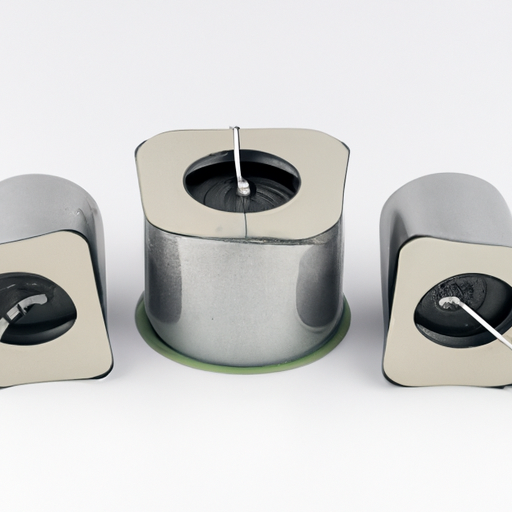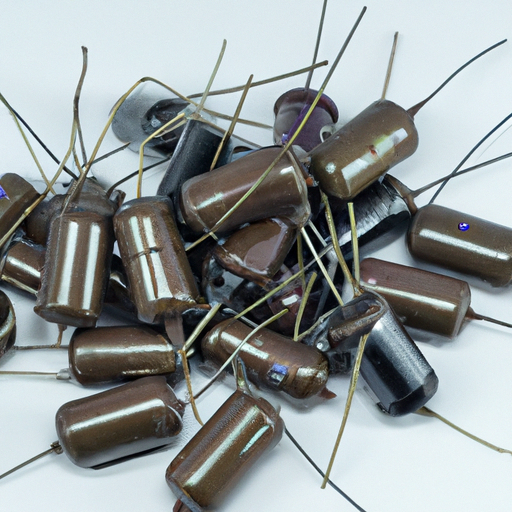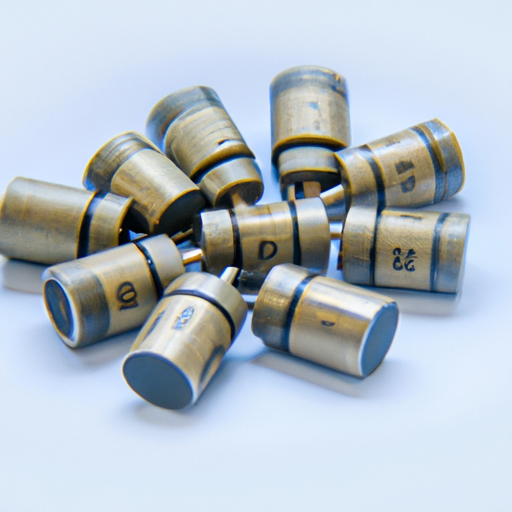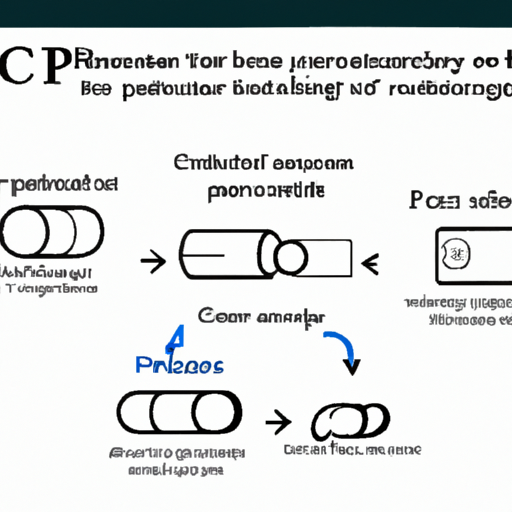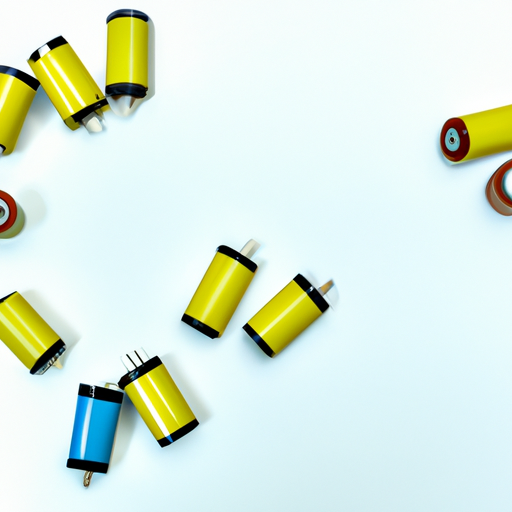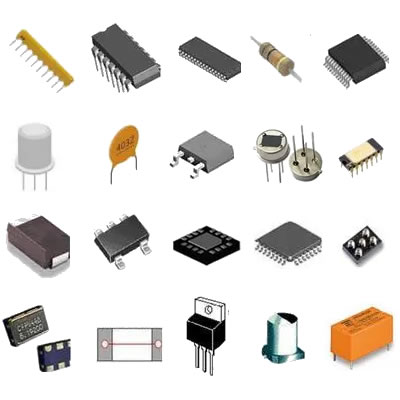What is the production process of mainstream filter capacitors?
The Production Process of Mainstream Filter Capacitors
I. Introduction
Filter capacitors are essential components in electronic circuits, playing a crucial role in smoothing out voltage fluctuations and ensuring stable power supply. They are used in a variety of applications, from power supplies to audio equipment, and their performance can significantly impact the overall functionality of electronic devices. Understanding the production process of these capacitors is vital for engineers, manufacturers, and anyone interested in electronics. This blog post will explore the various stages involved in the production of mainstream filter capacitors, from raw materials to quality assurance.
II. Types of Filter Capacitors
Filter capacitors come in several types, each with unique characteristics and applications:
A. Electrolytic Capacitors
Electrolytic capacitors are polarized components that offer high capacitance values in a compact size. They are commonly used in power supply circuits due to their ability to handle large voltage fluctuations.
B. Ceramic Capacitors
Ceramic capacitors are non-polarized and known for their stability and reliability. They are often used in high-frequency applications and are available in various capacitance values.
C. Film Capacitors
Film capacitors utilize a thin plastic film as the dielectric material. They are known for their low loss and high stability, making them suitable for audio and RF applications.
D. Tantalum Capacitors
Tantalum capacitors are known for their high capacitance-to-volume ratio and reliability. They are often used in applications where space is limited, such as in mobile devices.
E. Comparison of Different Types
Each type of filter capacitor has its advantages and disadvantages, making them suitable for specific applications. Understanding these differences is crucial for selecting the right capacitor for a given circuit.
III. Raw Materials
A. Overview of Materials Used in Filter Capacitors
The production of filter capacitors begins with the selection of raw materials, which include:
1. **Dielectric Materials**: These materials, such as aluminum oxide for electrolytic capacitors or ceramic for ceramic capacitors, are crucial for the capacitor's performance.
2. **Conductive Materials**: Metals like aluminum, tantalum, and copper are used for the electrodes, providing the necessary conductivity.
B. Sourcing and Quality Control of Raw Materials
Sourcing high-quality raw materials is essential for ensuring the reliability and performance of filter capacitors. Manufacturers often establish relationships with trusted suppliers and implement strict quality control measures to verify the materials' specifications.
C. Environmental Considerations in Material Selection
With increasing awareness of environmental issues, manufacturers are now considering the sustainability of their raw materials. This includes selecting materials that are recyclable or have a lower environmental impact during production.
IV. Design and Engineering
A. Initial Design Considerations
The design phase is critical in determining the capacitor's specifications, including:
1. **Capacitance Value**: The amount of charge the capacitor can store.
2. **Voltage Rating**: The maximum voltage the capacitor can handle without failure.
3. **Temperature Stability**: The capacitor's ability to maintain performance across a range of temperatures.
B. Simulation and Modeling
Before moving to production, engineers use simulation software to model the capacitor's performance under various conditions. This helps identify potential issues and optimize the design.
C. Prototyping and Testing
Once the design is finalized, prototypes are created for testing. This phase is crucial for validating the design and ensuring that the capacitor meets the required specifications.
V. Manufacturing Process
The manufacturing process of filter capacitors involves several key steps:
A. Step 1: Preparation of Dielectric Material
The first step is preparing the dielectric material. Depending on the type of capacitor, different dielectric materials are used, such as aluminum oxide for electrolytic capacitors or ceramic for ceramic capacitors. Processing techniques may include chemical treatments or physical layering to enhance the material's properties.
B. Step 2: Electrode Preparation
Electrode preparation involves selecting the appropriate conductive materials and applying coatings or layers. For example, aluminum foil may be coated with a dielectric layer for electrolytic capacitors, while tantalum powder is used for tantalum capacitors.
C. Step 3: Assembly
The assembly process involves layering the dielectric material and electrodes. This can be done through winding or stacking methods, depending on the capacitor type. Precision is crucial in this step to ensure optimal performance.
D. Step 4: Encapsulation
Once assembled, the capacitors are encapsulated to protect them from environmental factors. Various encapsulation materials, such as epoxy or plastic, are used, and the method of encapsulation can vary based on the capacitor type.
E. Step 5: Testing and Quality Control
After encapsulation, the capacitors undergo rigorous testing to ensure they meet electrical, mechanical, and environmental standards. This includes measuring capacitance, leakage current, and temperature stability.
VI. Quality Assurance
A. Standards and Certifications
Quality assurance is a critical aspect of capacitor production. Manufacturers adhere to international standards and certifications, such as ISO 9001, to ensure consistent quality and reliability.
B. Continuous Improvement Processes
Manufacturers implement continuous improvement processes to enhance production efficiency and product quality. This may involve regular audits, employee training, and feedback loops.
C. Role of Automation and Technology in Quality Assurance
Automation and advanced technology play a significant role in quality assurance. Automated testing equipment can quickly and accurately assess capacitor performance, reducing the likelihood of human error.
VII. Environmental and Safety Considerations
A. Waste Management in Capacitor Production
The production of filter capacitors generates waste, and manufacturers are increasingly focusing on waste management practices. This includes recycling materials and minimizing waste generation during production.
B. Compliance with Environmental Regulations
Manufacturers must comply with environmental regulations, such as the Restriction of Hazardous Substances (RoHS) directive, which limits the use of certain hazardous materials in electronic products.
C. Safety Measures in Manufacturing
Safety is paramount in capacitor manufacturing. Companies implement safety protocols to protect workers and ensure a safe working environment, including proper handling of chemicals and materials.
VIII. Conclusion
The production process of mainstream filter capacitors is a complex and multifaceted endeavor that requires careful consideration of materials, design, manufacturing techniques, and quality assurance. As technology advances, the industry continues to evolve, with trends such as miniaturization, increased efficiency, and sustainability shaping the future of capacitor manufacturing. Ongoing research and development are essential for driving innovation and meeting the ever-growing demands of the electronics industry.
IX. References
1. Academic journals on capacitor technology and materials science.
2. Industry reports on trends and advancements in capacitor manufacturing.
3. Manufacturer guidelines and standards for quality assurance and environmental compliance.
In summary, understanding the production process of filter capacitors not only highlights the intricacies involved but also emphasizes their significance in modern electronics. As we move forward, the importance of innovation and sustainability in capacitor manufacturing will only continue to grow.

